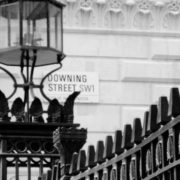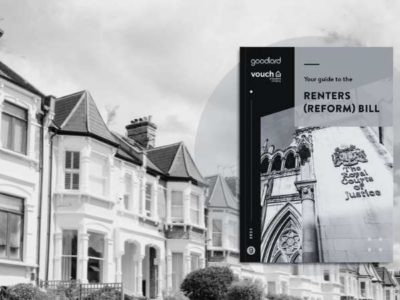New research has shown that cases of arrears in the buy-to-let sector are worsening at a faster rate than for homeowners.
Specialist property lenders analysed industry figures on the number of mortgages that have fallen into arrears by 2.5% or more of the mortgage balance, comparing the split between the buy-to-let and residential sectors and how each compares to the pre-pandemic market.
Buy-to-Let Arrears Increasing
Cases of buy-to-let arrears of more than 2.5% of the loan amount have risen by 42.6% in four years, rising from 4,930 in Q1 2019 to 7,030 in Q1 2023.
Over the same period cases of arrears for homeowners of more than 2.5% have actually declined by -8.6%, from 83,870 in the first quarter of 2019 to 76,630 in the equivalent quarter this year.
This suggests that fewer landlords are being shielded from the current economic climate, with both mortgage rates and energy prices increasing at a faster rate than rents.
Homeowners still more at risk
It’s still more common for residential homeowners to struggle however.
In the first quarter of this year there were some 76,630 homeowners in arrears of 2.5% or more of their mortgage balance.
While small, this accounted for 0.87% of total homeowner loans outstanding.
This proportion has hovered around this mark for the past four years, peaking at 0.94% during the first quarter of 2021.
In contrast, the number of landlords in arrears of 2.5% or more of their mortgage balance totalled 7,030 during Q1 of this year and accounted for 0.34% of total outstanding buy-to-let loans.
However, while this proportion is more than half that of owner-occupiers, it is the highest total number seen since Q1 2019, as well as the highest proportion of all buy-to-let loans, with the exception of Q4, 2022, when it also sat at 0.34%.
Mortgage forbearance
While arrears are far from out of control, a number of mortgage holders are likely to struggle when they remortgage, with typical 5-year fixed mortgage rates now climbing above 6%.
Chancellor Jeremy Hunt is introducing a mortgage charter in a bid to reassure mortgage holders that their lenders will support them in these difficult times.
As part of the measures, anybody worried about their mortgage repayments will be able to switch to an interest-only mortgage for six months without impacting their credit score.
Meanwhile no customer can be repossessed until 12 months after their first missed payment, giving them time to get their finances back in order.
Jonathan Samuels, CEO of Octane Capital, the specialist property lending experts responsible for the research, commented:
“It’s certainly a worrisome time for the property market, with mortgage rates and high inflation stretching people’s affordability to the limit.
It’s striking that buy-to-let landlords are becoming less shielded over time from the economic conditions, suggesting they are unable to entirely recoup their lost income in the form of higher rents.
The research suggests levels of arrears are in no way out of control however, so there’s no need to be too doom and gloom about the state of the housing market.
The Chancellor’s mortgage forbearance measures are designed to reassure people who are worried about the impact of rising rates, and it’s welcome these measures have been introduced before the horse has bolted – cases of arrears need to be tackled before people fall into trouble.
We’d still recommend mortgage holders to keep paying their loans as normal unless they are in need of emergency action, as measures like interest-only loans will only result in higher payments down the line to compensate.”
| Table shows the number of homeowners and landlords in mortgage arrears 2.5% or more of their mortgage balance and this figure as a proportion of all oustanding loans | ||||||
| Period | Homeowners arrears number | Total homeowner loans outstanding | Homeowners arrears % | BTL arrears number | Total BTL loans outstanding | BTL arrears % |
| 2019 Q1 | 83,870 | 9,010,000 | 0.93% | 4,930 | 1,920,000 | 0.26% |
| 2019 Q2 | 80,420 | 9,020,000 | 0.89% | 5,470 | 1,920,000 | 0.28% |
| 2019 Q3 | 76,110 | 8,990,000 | 0.85% | 5,290 | 1,930,000 | 0.27% |
| 2019 Q4 | 75,430 | 9,020,000 | 0.84% | 5,160 | 1,940,000 | 0.27% |
| 2020 Q1 | 77,090 | 9,000,000 | 0.86% | 5,200 | 1,960,000 | 0.27% |
| 2020 Q2 | 79,710 | 8,970,000 | 0.89% | 5,800 | 1,960,000 | 0.30% |
| 2020 Q3 | 79,900 | 8,960,000 | 0.89% | 6,220 | 1,970,000 | 0.32% |
| 2020 Q4 | 82,610 | 8,980,000 | 0.92% | 6,700 | 1,980,000 | 0.34% |
| 2021 Q1 | 84,010 | 8,980,000 | 0.94% | 6,180 | 2,000,000 | 0.31% |
| 2021 Q2 | 82,380 | 8,990,000 | 0.92% | 6,260 | 2,020,000 | 0.31% |
| 2021 Q3 | 80,360 | 8,980,000 | 0.89% | 5,880 | 2,030,000 | 0.29% |
| 2021 Q4 | 79,640 | 8,960,000 | 0.89% | 6,010 | 2,030,000 | 0.30% |
| 2022 Q1 | 75,700 | 8,940,000 | 0.85% | 5,870 | 2,040,000 | 0.29% |
| 2022 Q2 | 75,000 | 8,930,000 | 0.84% | 5,640 | 2,040,000 | 0.28% |
| 2022 Q3 | 74,420 | 8,920,000 | 0.83% | 5,760 | 2,050,000 | 0.28% |
| 2022 Q4 | 75,170 | 8,890,000 | 0.85% | 6,060 | 2,050,000 | 0.30% |
| 2023 Q1 | 76,630 | 8,840,000 | 0.87% | 7,030 | 2,040,000 | 0.34% |
| Q change | 1.9% | -0.6% | 0.02% | 16.0% | -0.5% | 0.05% |
| Annual change | 1.2% | -1.1% | 0.02% | 19.8% | 0.0% | 0.06% |
Mortgage arrears data for those in arrears of 2.5% or more of their mortgage balance sourced from the Building Society Association





















Comments